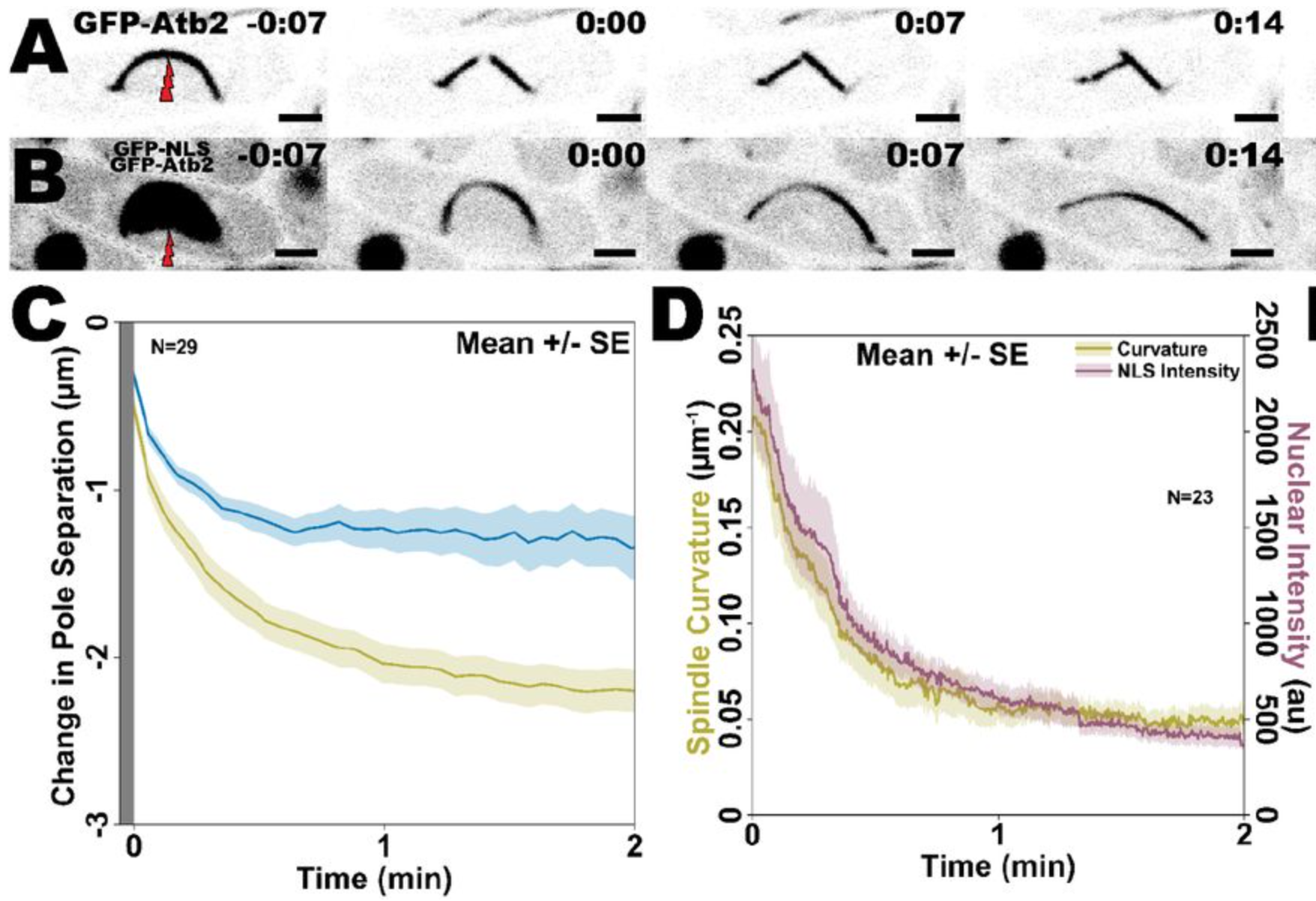Abstract
The fission yeast S. pombe divides via closed mitosis. In short, mitotic spindle elongation and chromosome segregation transpire entirely within the complete nuclear envelope. Both the spindle and nuclear envelope must undergo significant conformation changes and are subject to varying external forces during this process. While the mechanical relationship between the two mitotic structures has been explored previously1–4, much is still left to be discovered. Here, we investigate this relationship by observing the behaviors of spindles and nuclei in live mitotic fission yeasts following laser ablation. First, we characterize these dynamics in molecularly typical S. pombe spindles, finding them to be stabilized by dense crosslinking, before demonstrating that the compressive force acting on the spindle poles is higher in mitotic cells with greater nuclear envelope tension and that spindle compression can be relieved by lessening nuclear envelope tension. We finally examine the differences between the mitotic apparatus in S. pombe and S. japonicus, an evolutionary relative of S. pombe that undergoes semi-open mitosis, and show that S. japonicus mitotic spindles appear to both splay and bend more easily than those of their S. pombe relatives. Altogether, these data suggest that fission yeast spindle crosslinking may be tuned to support spindle extension and oppose nuclear envelope tension.
